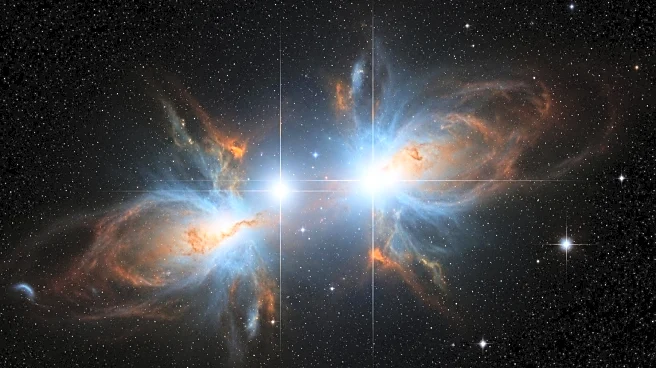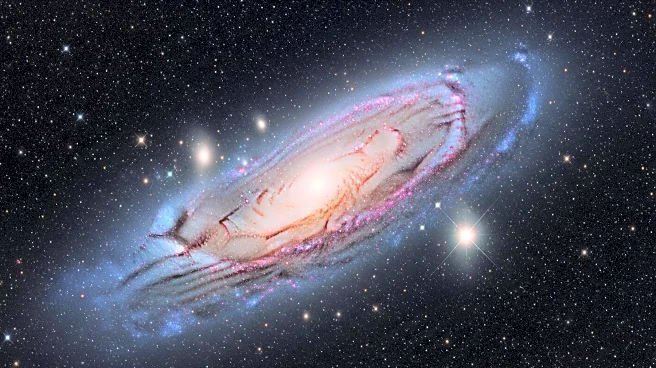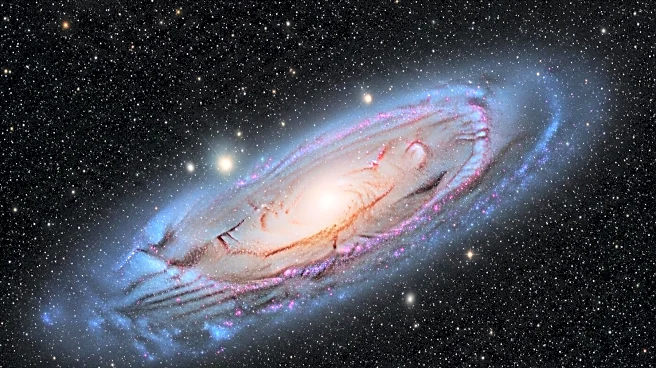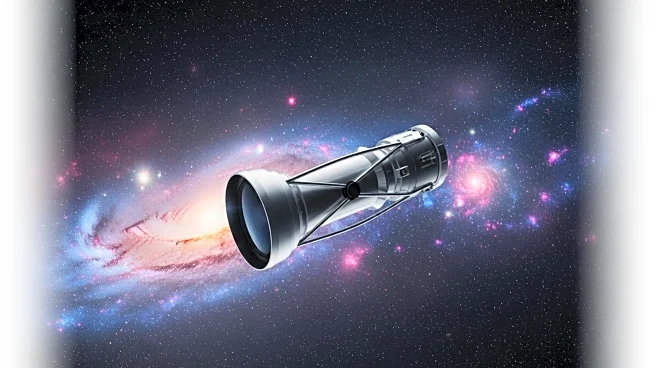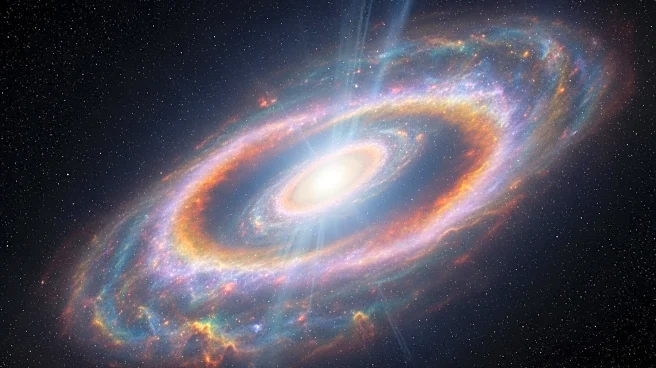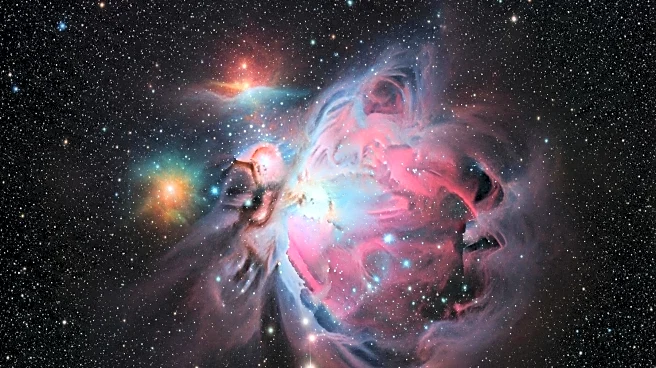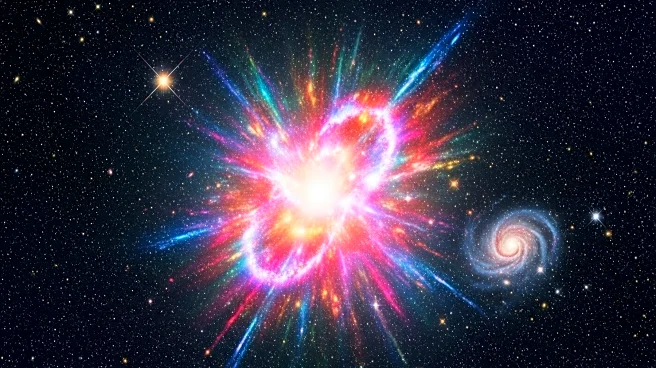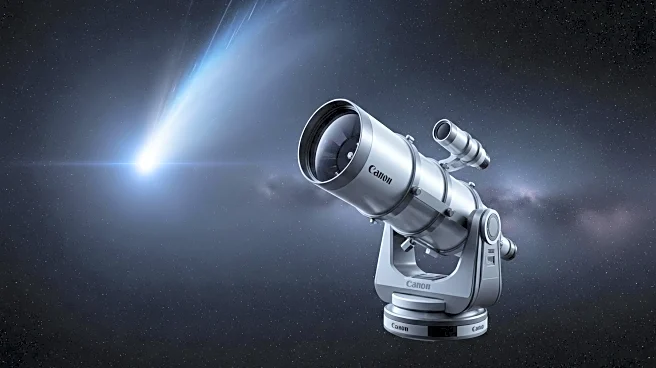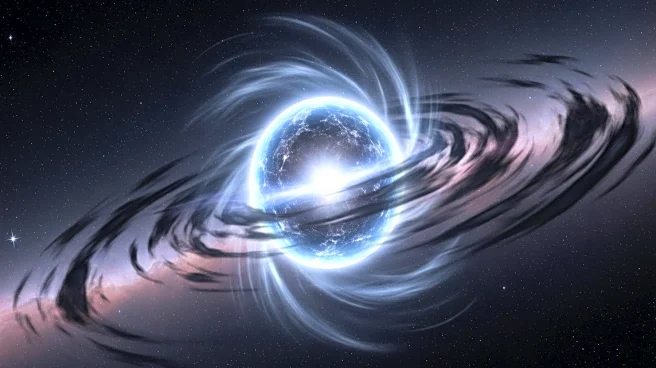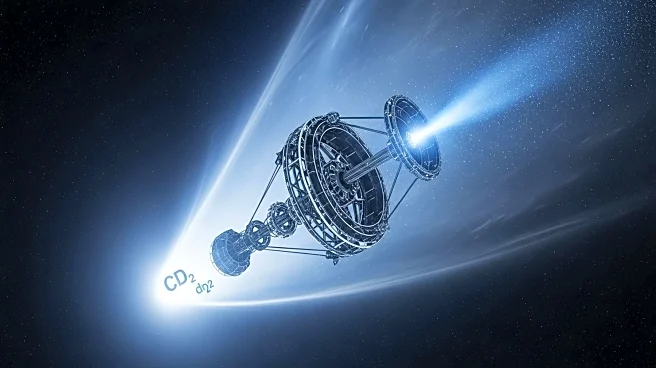What's Happening?
Astronomers have discovered one of the most massive binary star systems in the galaxy, located in the starburst region NGC 3603, approximately 22,000 light years from the Sun. The system, known as NGC3603-A1, consists of two stars with masses of 93 and 70 times that of the Sun, respectively. These stars orbit each other every 3.8 days, a rapid pace that results in nearly 100 orbits in a single Earth year. The discovery was facilitated by archival data from the Hubble Space Telescope and new observations, with a key insight provided by Sarah Bodansky, an undergraduate student at Carleton College. Her observation of doubled spectral features during the stars' greatest motions revealed the binary nature of what appeared to be a single star. This finding is significant for understanding the dynamics and evolution of massive stars.
Why It's Important?
The discovery of NGC3603-A1 provides crucial insights into the evolution of massive stars, which are important for understanding the formation of binary black holes. These systems can eventually merge, creating gravitational waves detectable by scientists. The mass transfer observed between the stars, where the smaller star gains mass from its larger companion, is a key process in stellar evolution. This research allows astronomers to make more accurate predictions about the behavior and fate of massive stars, which are typically difficult to study due to their size and energy. Understanding these systems helps in predicting where and when gravitational wave-producing collisions might occur, contributing to the broader field of astrophysics.
What's Next?
The study of NGC3603-A1 will continue to provide valuable data for astronomers, potentially leading to more discoveries about massive star systems and their role in the universe. As researchers further analyze the data, they may uncover additional details about the dynamics of mass transfer and its impact on stellar evolution. The findings could also refine models used to predict the behavior of massive stars, improving the accuracy of future astronomical predictions. Continued observation and analysis will enhance our understanding of the processes leading to the formation of binary black holes and the generation of gravitational waves.
Beyond the Headlines
The discovery highlights the importance of archival data and the role of young researchers in advancing scientific knowledge. Sarah Bodansky's contribution underscores the potential for fresh perspectives to uncover overlooked details in existing data. This case exemplifies how collaborative efforts and diverse viewpoints can drive scientific progress, particularly in complex fields like astrophysics. The study also emphasizes the significance of advanced imaging technologies, such as the Hubble Space Telescope, in resolving intricate cosmic phenomena that are otherwise difficult to observe.


